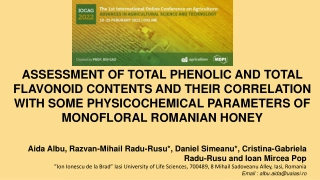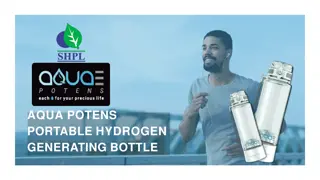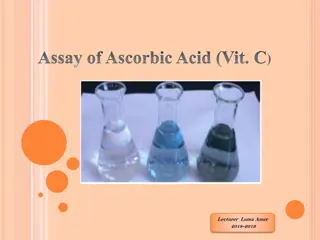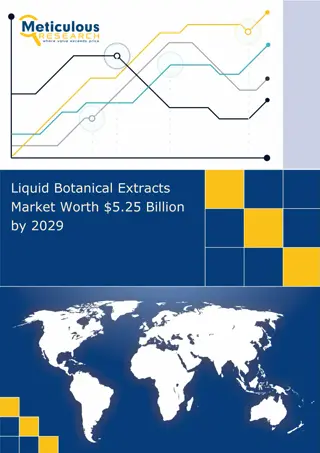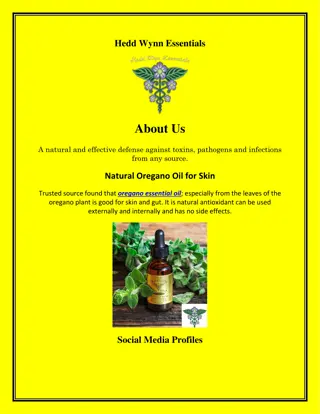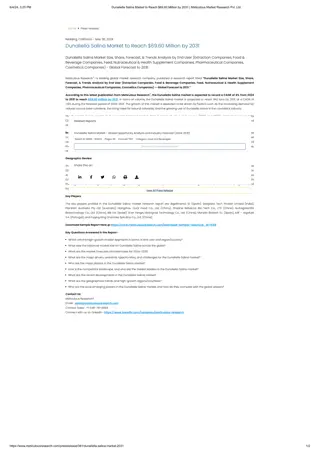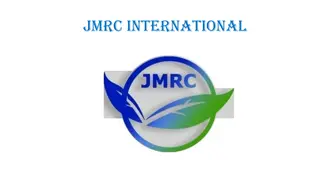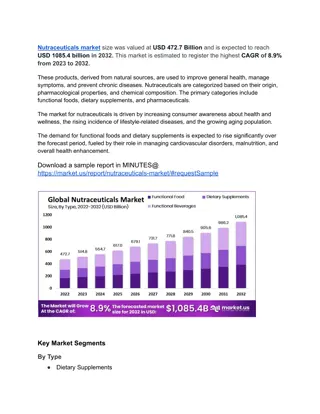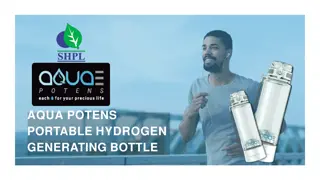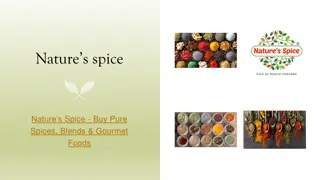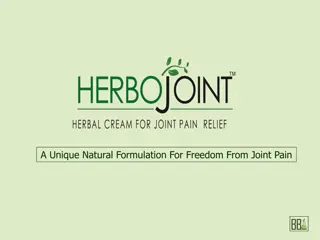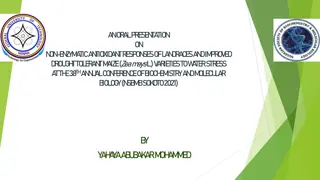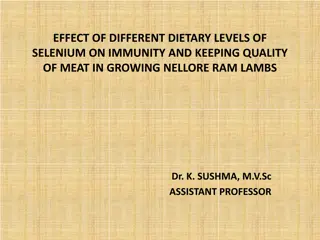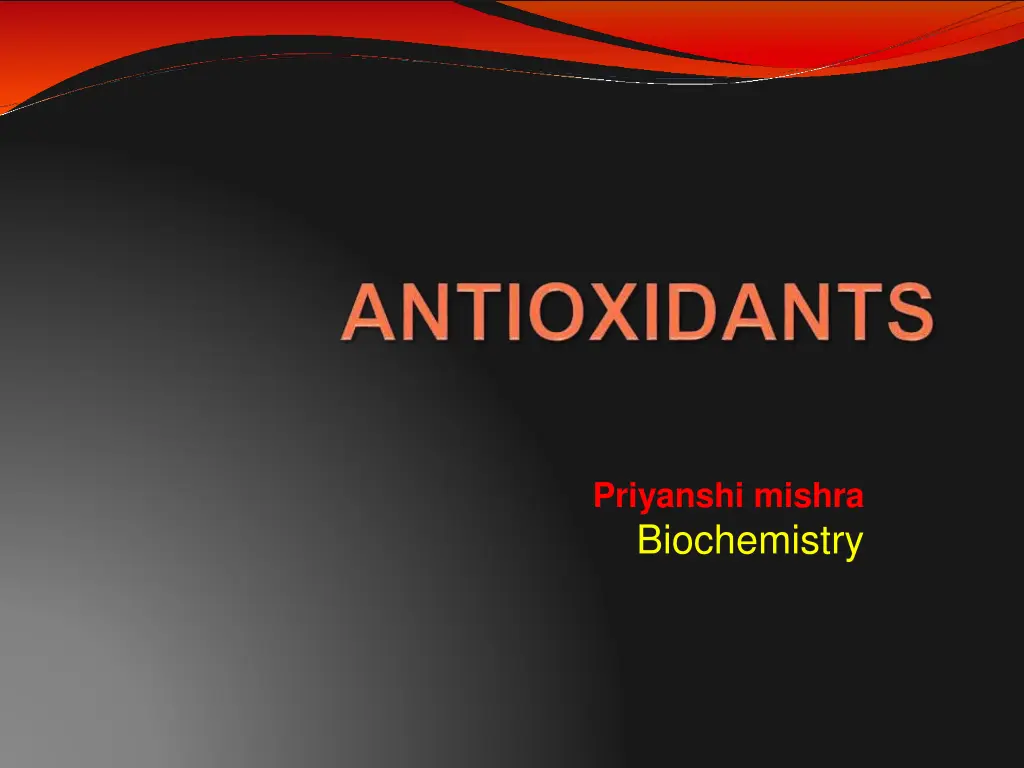
Understanding Antioxidants and Their Types in Biochemistry
Learn about antioxidants and their important role in biochemistry, including their definition, types (enzymatic and non-enzymatic), natural and dietary sources, defense mechanisms, and functions. Antioxidants play a crucial role in protecting cells from damage caused by free radicals and oxidation reactions.
Download Presentation

Please find below an Image/Link to download the presentation.
The content on the website is provided AS IS for your information and personal use only. It may not be sold, licensed, or shared on other websites without obtaining consent from the author. If you encounter any issues during the download, it is possible that the publisher has removed the file from their server.
You are allowed to download the files provided on this website for personal or commercial use, subject to the condition that they are used lawfully. All files are the property of their respective owners.
The content on the website is provided AS IS for your information and personal use only. It may not be sold, licensed, or shared on other websites without obtaining consent from the author.
E N D
Presentation Transcript
Priyanshi mishra Biochemistry
ANTIOXIDANTS DEFINITION : An antioxidant is a molecule capable of inhibiting the oxidation of other molecules. Oxidation reactions can form free radicals and these start chain reactions that damage cells . Antioxidants terminate these chain reactions by removing free radical intermediates and inhibit other oxidation reactions
TYPES OF ANTIOXIDANTS These are three types I)Enzymatic and Non enzymatic antioxidants: They are present in both Extracellular and Intracellular Environment. Enzymatic Antioxidants - S.N o A Antioxidant Location Function Glutathione peroxidase Mitochondria & Cytosol Removal of H2O2 and Organic Hydro peroxide Removal of H2O2 B Catalase Mitochondria & Cytosol
Non Enzymatic Antioxidants S. No t A Carotenoid s Antioxidan Location Function Lipid soluble antioxidants in membrane tissue Product of heme metabolism in blood Removal of ROS B Bilirubin Extracellular antioxidants C Glutathione Non-protein thiol in cell - Lipoic acid Cellular oxidant defense Serves as substitute for Glutathione, D Endogenous thiol
Aqueous phase of cell cell Free scavenger, recycle recycle vit- E E Viamin C Vitamin E Cell Chain breaking Antioxidant F Uric acid Product of Purine Metabolism Scavenging of OH radical G
II) Natural and Dietary Sources a) Natural sources : Chlorophyll derivatives , Carotenoids , Essential oils , Phytosterols, Alkaloids, Phenolics, Nitrogen containing compounds. b)Dietary antioxidants : Camosol ,Rosmanol , Camosoic acid, III) Based on Defense Mechanism : a)Preventive Antioxidants : Peroxidase, Catalase , Lactoferrin, Carotenoids Etc .
b)Radical scavenging Antioxidants : Vitamin C and Carotenoids. c) Repair and DENOVO antioxidants d) Enzyme inhibitor Antioxidants
Functions of Antioxidants: Antioxidants such as vit- C & vit- E boost our immune system. Certain phytochemicals have beneficial effect on heart diseases. Antioxidants lower the level of LDL- cholesterol, thus preventing plaque deposition in the blood vessels. It is beneficial in cancer prevention. Antioxidants neutralize substances that can damage the genetic material by oxidation.
Vitamins as Antioxidants CAROTENES : A carotene is one of four Antioxidants that arevital for our general health and wellbeing. There are four carotene compounds : -Carotene, -Carotene, -Carotene, -Carotene. -Carotene & -Carotene are the powerful antioxidants -Carotene is an antiageing micronutrient and play a significant role in reducing the effects of certain illnesses such as heart disease, decreased immune function, cataracts, cancer.
Much like beta, alpha-carotene is found in foods like: Carrots ,Sweet potatoes ,Squash ,Brussel sprouts,Kiwi, Spinach, Broccoli, Kale, Mang0, Cantaloupe ASCORBIC ACID(VIT-C) : It is a hydrophilic antioxidant. Neutralization of H2O2 Maintain healthy collagen in skin, Repair damaged tissue, healthy teeth and bones, boost immune system As a free radical fighter helps ward off wrinkles and many illnesses linked to oxidation, cataracts, arthritis, heart disease and cancer
Vitamin C functions as an anti-inflammatory, and helps the body fight inflammatory diseases, including fibromyalgia, and chronic fatigue, angina, bronchitis, bruises, canker sores, constipation, diabetes, vitamin C helps the body absorb iron, it is also useful in treating iron deficiency and anemia. Sources : Broccoli, Strawberries, Kale, Citrus fruits like oranges, limes, and lemons, Tomatoes ,Bell peppers Cabbage, Watermelon, potatoes and spinach.
TOCOPHEROLS ( vit- E) : It is a lipid soluble and among them - tocopherol is biologically active It is an antioxidant present in all cellular membranes and protects against lipid peroxidation and normal ageing process. It directly acts on oxyradicals and serve important chain breaking antioxidant. Vitamin E is used as treatment for many chronic diseases including Alzeimer s disease, osteoarthritis and prostate enlargement. Sources : Peanut oil, cotton seed oil, sunflower oil, whole grains, green leafy vegetables.
LPHA LIPOIC ACID : It is universal anti oxidant It is also called Thioctic acid It helps to converts glucose to energy, detoxifies the body, fights inflammation in the skin and helps stabilizes blood sugar It plays a key role in recycling other important antioxidants such as ascorbic acid, tocopherol and Glutathione. It penetrates through tissues composed of fat and those made of water such as Nervous tissue and Heart Sources : Spinach , Liver , Brewer s yeast
Minerals asAntioxidants SELENIUM : It is an essential trace element and is proved tobe antioxidant It works with Vit E in fighting freeradicals It is required for the functioning of an importantenzyme Glutathione peroxidase Selenium protects the body from free radicaldamage in two ways a)It is incorporated into proteins to make selenoproteins (acts as antioxidant) b) It helps in the body manufacture its ownnatural antioxidant Glutathione It reduce colorectal, lung and prostratecancer Sources : sea foods, meats ,organ meats, wholegrains.
Hormones as Antioxidants MELATONIN : It is a powerful antioxidant that can easily cross cell membranes and the Blood brain barrier It does not undergo redox cycling Melatonin cannot be reduced its former state as it forms stable compounds after reacting with free radicals It has been referred as a terminal /Suicidal antioxidant
MetabolicAntioxidant GLUTATHIONE : It is the mother of allAntioxidants It is a Tripeptide made of Cysteine, Glutamic acid and Glycine It is a Hydrophillic antioxidant found in every cell in Human body It is the most important antioxidant due to the fact that it is directly found in cells and breakdown the free radicals with in the cells, hence it is often called Mother of allAntioxidants . Sources: Garlic, Broccoli, Onions, Dairy products, Oats, Chicken, Watermelon.
URIC ACID : It is the most abundant and uncomplicatedantioxidant found in the body It has the highest concentration of any oxidant foundin blood cells and is hydrophilic and it accounts for more than half of all antioxidantcapacity It is a marker of oxidative stress and is a powerful scavenger of singlet oxygen and hydroxyl radicals. Elevated levels of uric acid in diseases associatedwith oxidative stress such as stroke &atherosclerosis, Parkinson s disease. Sources: sweetbreads, liver, beef, meat extractsetc..
Ceruloplasmin : Inhibits Iron and copper dependent lipid peroxidation. Transferrin : Binds to iron and prevents iron catalysed free radical formation. Albumin : Can scavenge free radicals formed on its surface Bilirubin : Protects the albumin bound free fatty acid from peroxidation Haptoglobulin : Binds to free haemoglobin and prevents acceleration of lipid peroxidation.
Essential oils asAntioxidants These are a class of volatile oils obtained by steam distillation and these may be extracted from plants, fruits, flowers, barks, roots and seeds. Advantages: Due to their small molecular size, they can easily penetrate the skin tissue. As essential oils are lipid soluble they are capable of penetrating the membranes easily even in conditions when oxygen deficiency is present. They serve as powerful antioxidants & they prevent mutants and oxidants in cells.
Pro-oxidants These are chemicals that induce oxidative stress either through creating reactive oxygen species or inhibiting antioxidant systems The oxidative stress produced by these chemicals can damage cells and tissues Some substances can acts as either antioxidants or prooxidants depending on the specific set of condition. Eg: Transitional metals (Mn, Fe, Cu), Vit C and Uric acid.
Uses in technology Food preservatives: Antioxidants used as food additives to help guard against food deterioration Exposure to oxygen & sunlight are the 2 main factors in the oxidation of food. Natural preservatives- vit C & vit E Synthetic antioxidants- Propyl gallate, Tertiary butyl hydro quinone(TBHQ), Butylated hydroxy anisole(BHA), Butylated hydroxy toluene(BHT) Unsaturated fats- drying, smoking, salting or fermenting.
Industrial uses: Antioxidants are frequently added to industrial products. Common use : stabilizers in fuels & lubricants to prevent oxidation In gasolines to prevent polymerization that leads to the formation of engine fouling residues.




